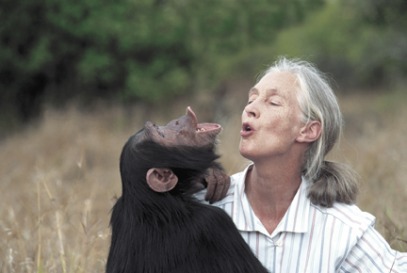This web page was produced as an assignment for Genetics 677, an undergraduate course at UW-Madison.
FOXP2 (forkhead box P2) is a member of a large family of transcription factors known as the forkhead proteins. This protein is responsible for regulating many genes involved in the development of the brain, lungs and gut (3). Individuals possessing mutations within the gene develop speech disorders that affect their ability to express and articulate language (3). Population genetic analysis of the gene showed the gene has undergone recent selection in the human species, suggesting that it may have been important in the evolution of language (2). Analysis of FOXP2 versions from other species have linked the gene to song in birds, pattern learning in mice, and echo-location in bats (1). Furthermore, comparison of FOXP2 between humans and Neanderthals showed that they share the same variant of the gene, indicating that speech may be more primitive than previously believed (4). Although evidence suggests that FOXP2 was involved in the evolution of human speech, the complexity of the trait requires further investigation into the gene's possible role in the evolution of speech.
Verbal Dyspraxia and Language Development
As stated above, mutations in FOXP2 have been linked to individuals affected the speech disorder verbal dyspraxia. Verbal dyspraxia is a speech disorder affecting individuals abilities to correctly pronounce sounds, syllables, and words. Affected individuals have no cognitive handicap, but are unable to coordinate certain movements required for speech, leaving them with a limited speech repertoire. They often have difficulties learning how to read and spell, as well as difficulties performing other fine motor tasks such as cutting, coloring, and writing (6). Below is a video of a 4 year old girl with verbal dyspraxia.
In 1998, FOXP2 was identified as the genetic basis of the disorder through studies done on the KE family, an extended family of about 30 individuals, roughly half of whom possess the disorder. MRI imaging of affected KE family members reveals reduced levels of gray matter in Broca's area, the caudate nucleus, and the cerebellum. In contrast, these individuals had increased levels of grey matter in Wernicke's area and the putamen. Furthermore, these areas are known to play roles in control of voluntary movement and speech (3).
This project will focus on FOXP2 and the gene's putative role in the development and evolution of human speech and verbal dyspraxia.
References
1. Carroll SB (2005) Evolution at Two Levels: On Genes and Form. PLoS Biol 3(7):e245. PMID: 16000021
2. Enard W, Przeworski M, Fisher SE, Lai CSL, Kitano WV, et al. (2002) Molecular evolution of FOXP2, a gene involved in speech and language. Nature 418:869–872. PMID: 12192408
3. Vargha-Khadem F, Gadian DG, Copp A, Mishkin M (2005) FOXP2 and the neuroanatomy of speech and language. Nat Rev Neurosci 6:131–138. PMID: 15685218
4. Krause J, et al. (2007) The derived FOXP2 variant of modern humans was shared with Neandertals. Curr Biol 7(21):1908-12. PMID: 17949978
5. (Figure) Imaging Notes. Retrieved February 02, 2009 fromhttp://www.imagingnotes.com/go/article_free.php?mp_id=1&Udo
6. Guild AS and Vail T. What is Developmental Apraxia of Speech? Retrieved May 04, 2009 from http://www.tayloredmktg.com/dyspraxia/das.shtml
Andrew Tritt
tritt at wisc dot edu
Last Updated 05/13/2009
Genetics 677

